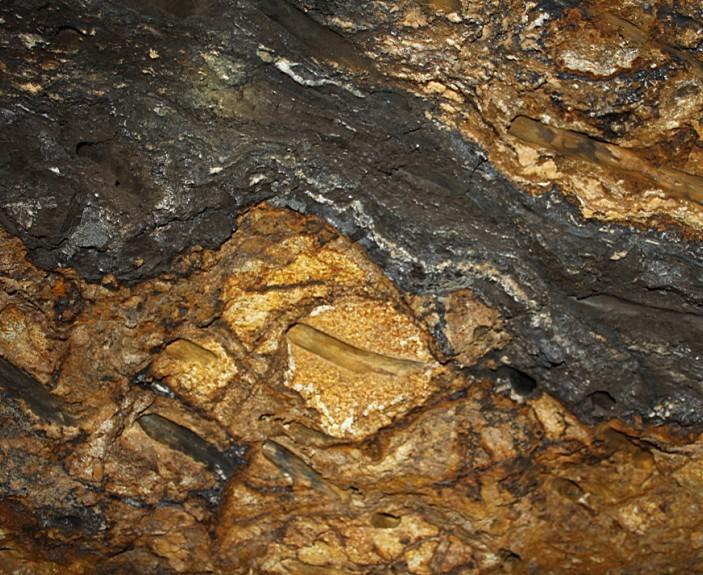Is there Gold on That Mountain?
/M.F. Stephenson’s famous words, “There’s gold in them thar’ hills” are well known, although most people think he referred to California hills when in fact he was pointing to Georgia’s Appalachian foothills. By the time James Marshall discovered gold at Sutter’s Mill (in Coloma, California) in 1848, the eastern gold fields were already in full production.
Charlotte, NC saw the first U.S. gold strike in 1799 when a boy found a seventeen pound nugget in a creek on his father’s farm. Less than fifty years later, gold was found near Dahlonega, Georgia. The first gold-rush town was established in Nuckollsville, Georgia about six miles from present day Dahlonega.
Legislation passed in 1835 established U.S. Mints in both Charlotte and Dahlonega. The Dahlonega mint actually processed quite a lot of California gold until the San Francisco mint was opened in 1854.]
Gold Seam
The wealth found in Georgia was a contributing factor to the Cherokee removal of 1838. Unlike some of the native peoples in South America, the Southeastern-native Cherokee nation did not mine gold traditionally. However, as the white man began to influence their society, Cherokees learned the value of this precious metal and began to work their Georgia homeland until the time of their removal.
Why all this talk about gold? No, I haven’t made a strike on the Cumberland Plateau – don’t we all just wish? But I do know of a legend or two…
You see, gold can be found in a couple of different forms. There’s the naturally occurring seams of gold that must be mined and refined; then there’s gold coins or jewelry that’s been lost or left.
The first legend speaks of the mining kind of gold.
Sometime around 1909, Tom and Rhoda Norris bought a tract of land in Martha Washington. Rhoda, born Rhoda England, had a brother named Luke England (known as ‘Uncle Luke’ all around) who was living in Muddy Pond. While the two communities don’t seem especially close if you’re traveling by foot today, if you go the nigh way, it’s really not too far. In fact, there is a possibility that the two farms joined on the northwest side of the Norris land.
At this time, Luke would have been in his mid-fifties, not a young man in that day when the life expectancy was forty-nine. But he still had small children at home that necessitated him hunting regularly to keep meat on the table. And it was just such a hunting trip that took him across Hurricane Creek and onto his brother-in-laws farm.
Now property lines were viewed a little differently in those days of no fence laws, roaming cattle and prolific hunters. Tom would not have considered Luke poaching even if he hadn’t been kinfolk. But allowing a man to kill game on your land doesn’t mean all the resources are there for the taking. Can you imagine the surprise and excitement when a hunting trip seeking deer, or rabbit, or squirrel – really anything edible that you could drag home – produced instead a gold mine? And that’s just what Luke reported finding!
Of course, Luke went directly to his Tom and reported the find, but not the details of the location; he knew he had to make a deal before he told everything that he knew. On the walk up to Tom and Rhoda’s house, Luke had quickly planned the necessary mining operation and he assumed he and Tom would split all their profits fifty-fifty. Tom disagreed.
Tom was never known for being overly-generous and refused Luke’s offer. He wanted two-thirds of all profits. Luke refused.
Luke declared if Tom wouldn’t give up half then he wouldn’t get anything. He walked away never divulging to Tom the location of the riches. However, Tom and Rhoda raised twelve children and Luke talked to each of them in turn. Each of them, mostly grown by this time, was told a slightly different story about what he saw and where he saw it; and each child at one time or another attempted to follow the clue their old uncle had given them, to no avail.
As this story was passed from one generation to another, the little details that Luke disclosed began to be compared. It seems that he told everyone a slightly different story and we now theorize that had all of the Norris children gotten together with their stories, the gold would have been pinpointed. Unfortunately, they searched independently and no one was successful.
The really good news in this story is that Luke and Tom seemed to have remained friends with no hard feelings about the failed deal. Certainly the England and Norris families remained on good terms.
Many years later, two of Tom’s grandchildren did locate a small seam of Pyrite, commonly known as Fool’s Gold. They had is assayed and found it to be worth something like twenty dollars per ton. It was never mined.
Next week we’ll talk about mountain legend of the other kind of gold – coins.
In the meantime, do you have a gold legend from the plateau? I’d love to hear it.




